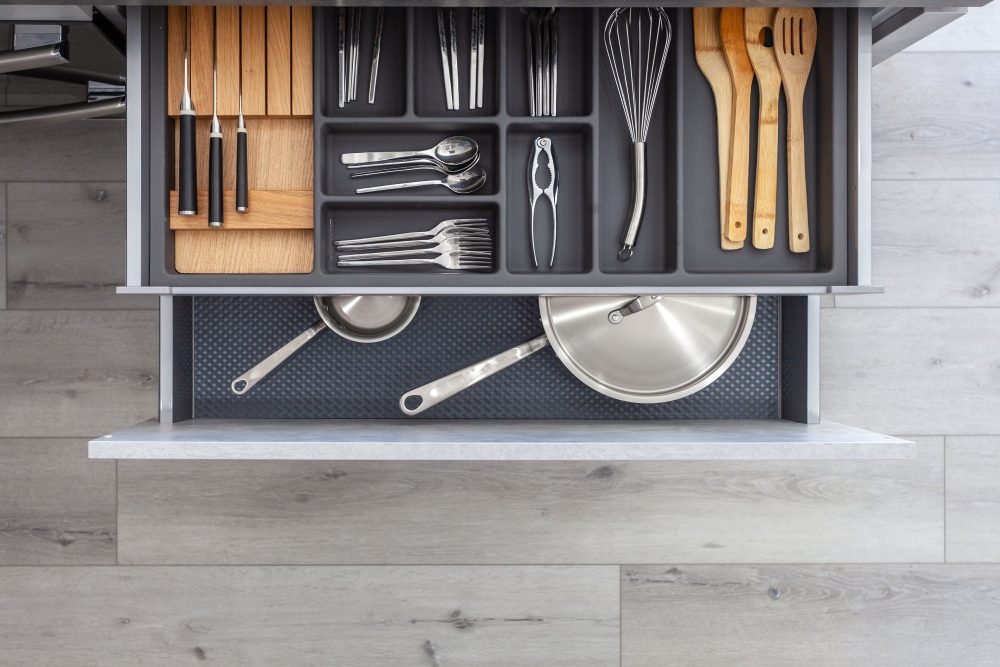Danny Soos’s epiphany arrived in one of London’s high-end kitchen showrooms.
The products offered simply did not match his vision.
“I did my first flat in London with the old mindset of going to a showroom, picking up a brochure, and making decisions,” the co-founder of FORM Kitchens says. “It was hard to find products in my price range, and my kitchen layout was difficult.”
This was no novice at kitchen remodels. Soos estimates he’s done 15 to 20, working with his parents’ renovation firm. But he found that showrooms offered obstacles, rather than solutions.
“Every time I renovated a kitchen I’d go to a showroom and couldn’t’ find what I wanted when I visualized how it would look,” he says. “I did all the tricks. like taking photos of the space, taking them to the showrooms, but still the visualization was tough.”
So in 2018, he and FORM’s co-founder Tom Sherman came up with an online solution for affordable kitchen cabinetry design. “We realized that the cost could come down,” he says. “We came to America, raised money, and talked to designers and architects, asking them what they thought.”
They worked on the concept of showroom-free high design for 18 months. They got the formula to click late last year. And they’re scaling it up now. “These are the same products that you’d find at other high-end showrooms, and done with our designers,” he says. “Our clients save on the showroom markup.”
FORM gives its clients more of what they want and less of what they don’t. “It’s high-quality cabinetry and hardware, and they don’t want to spend on overhead,” he says. “And they can see how it will look in their own homes before it’s installed.”
Of its 21 U.S.-based employees, 11 are designers recruited from some of Europe’s best firms, including Boffi, Bulthaup, and Poliform. “They’re really top people,” he says. “But what makes our designs different is that it’s based on understanding how our clients are using the kitchen – why they want this and why they want that and why they’re remodeling in the first place.”
Their process starts with an hour-long video kick-off, where the team looks to understand what clients need in their new space. Their designers learn everything from their preferred aesthetic to their practical needs around cooking and storage. They’ll even have clients walk through making their favorite recipe to understand how they move through their space.
After that meeting, the design team renders a client’s new kitchen in full, photorealistic 3D, which takes a week or so. “We train people when they join the company to understand that good design improves people’s lives,” he says. “If it doesn’t, it’s not good design, including functionality and how to use space in a multi-purposeful way.
FORM’s cabinetry and hardware is sourced mostly from Germany. “We found the Germans had the best kitchens in the world,” he says. “German kitchens are incredibly popular because of their functionality, look, and feel – and they’re tactile, with clean lines.”
FORM sees itself as a conduit to those highly efficient German systems – to make them accessible, with less expense, in the U.S. market. That means prices comparable to a Home Depot kitchen. “Most fall between $15,000 to $25,000 for the cabinetry, with the cheapest $10,000,” he says. “We do just the cabinetry and the hardware – not the countertops.”
They produce the plans, and specify materials and appliances like Bosch, SubZero/Wolf, and Cafe by GE. “The most popular is Bosch, in the upper/middle market,” he says. “The client can specify.”
They’ll work with a client’s general contractor, or recommend one if needed. “Our kitchens are often part of a larger project, and the cabinets come with numbers on the back,” he says. “We have videos, and if contractors have questions, they can send a picture.”
A quick install takes three days, while a big one takes 10. “But usually, it takes 30 percent less time than a typical American kitchen,” he says.
Currently, they’ve got 95 kitchens – 80 percent remodels and 20 percent new construction – underway. Among their clients are founding art director of Kinfolk magazine Amanda Jane Jones, New York DJ Brendan Fallis, and boutique hotelier Jayson Seidman.
And the list is growing.
For more, go here.
[slideshow id=2284]


